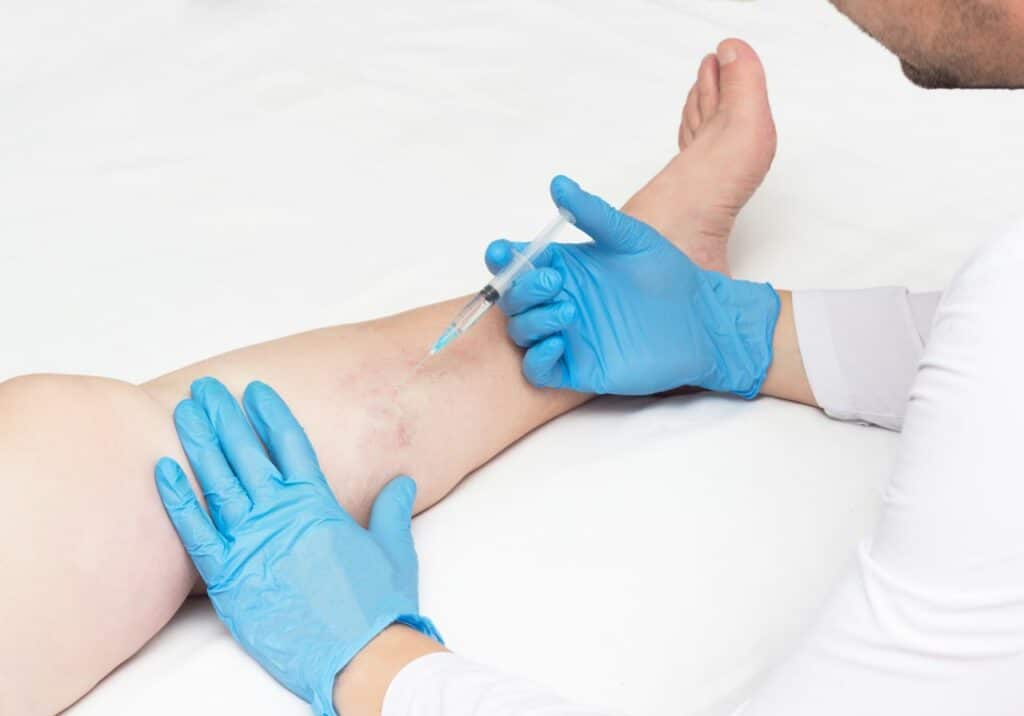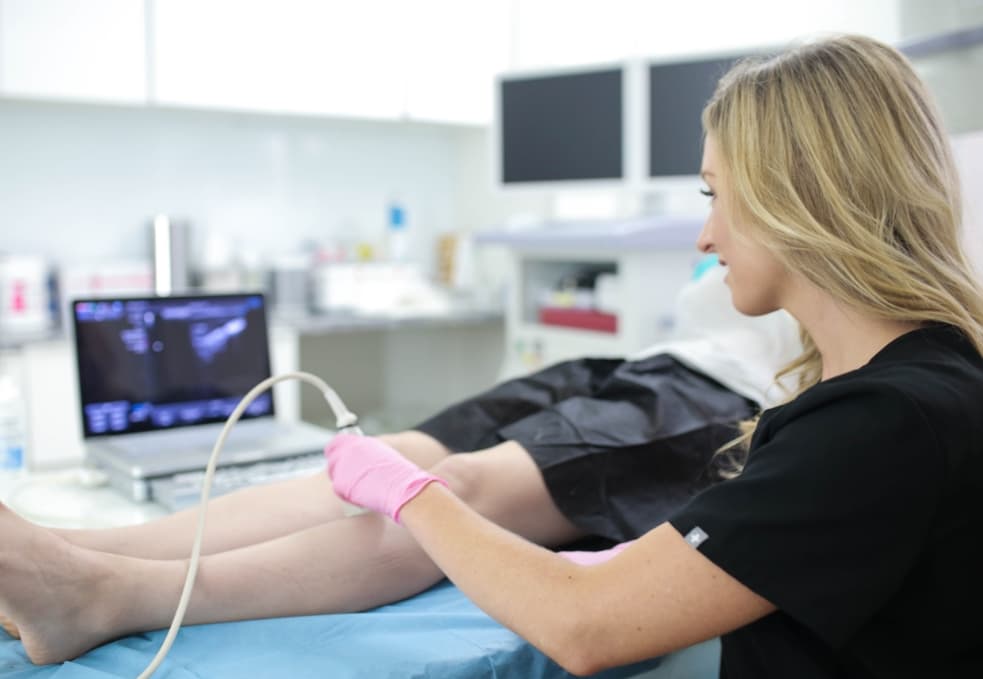What is chronic venous insufficiency?
Chronic venous insufficiency is the circulatory disorder responsible for most vein problems, including spider veins, varicose veins, and deep vein thrombosis. Chronic venous insufficiency is a medical condition wherein your vein valves collapse, and blood flows backward to accumulate in the leg veins. Healthy veins have valves that act as one-way doors, ensuring blood only flows towards the heart, not backward because of gravity. When your vein valves collapse, blood flows backward due to gravity, eventually accumulating in the leg veins. The continued accumulation of blood in leg veins is responsible for spider veins, varicose veins, and most other vein problems.

What are the signs and symptoms of chronic venous insufficiency?
Venous insufficiency is a chronic condition that gradually worsens with time. The initial signs and symptoms of vein disease are fairly mild and benign, such as leg pain, leg heaviness, leg swelling, frequent muscle cramps in the legs, and restless leg syndrome. The symptoms of chronic venous insufficiency usually worsen at the end of the day or after long periods of sitting or standing still. If you notice these symptoms, with or without spider veins and varicose veins, you need to contact reliable board-certified vein doctors in Long Island.
The most visible signs of vein disease are spider veins and varicose veins. Spider veins are dense clusters of blood vessels that appear just underneath the uppermost layers of the skin, and they often resemble a network of spider webs. Varicose veins are thick masses of tangled, twisted, and knotted blood vessels that bulge out of the skin’s surface. If varicose veins continue dilating because of blood accumulation, they may burst and cause profuse bleeding. As such, if you notice spider veins and varicose veins, you should immediately consult a state-of-the-art vein center in Long Island.
If left untreated, venous insufficiency continues worsening, leading to even more dangerous signs and symptoms. The most advanced complications of untreated varicose veins and vein disease are skin discoloration, skin ulcers on the legs, and deep vein thrombosis. You may develop leg ulcers because your legs don’t receive enough blood flow to heal wounds, and the accumulated blood in leg veins may eventually form blood clots (deep vein thrombosis), which can eventually lead to pulmonary embolism. You shouldn’t wait around for the advanced complications of vein disease to appear — seek vein treatment as soon as possible.
Can you get varicose veins in your arms?
Varicose veins are usually found on the lower extremities of the body, such as the thighs, hips, and calves. That’s because gravity forces blood to flow backward and accumulate in the leg veins, leading to vascular dilation and varicose veins. The arms aren’t common spots for varicose veins because the veins in your arms can easily carry blood towards the heart without having to defy gravity. But while it’s rare to get varicose veins in arms, it’s not entirely impossible. You can get varicose veins on any part of the body, including the arms.
Do men get varicose veins?
Varicose veins can happen to anyone, including men, but it’s especially common among women. Approximately 25% to 30% of the patients with varicose veins are men, and the remaining 70% are women. The risk of varicose veins among men gradually increases over time, and men over 50 are the most likely to develop vein problems. That’s because your vein valves weaken as you get older because of consistent use, leading to a higher risk of collapsed veins and vein disease, especially if you have a sedentary lifestyle as well.
Women are generally more likely to get varicose veins because the estrogen and progesterone hormones, which are abundantly found in women, weaken the vein valves. For that same reason, the risk of varicose veins and vein disease is particularly high amongst pregnant women, those undergoing menopause, those undergoing hormone therapy, and those taking birth control pills. If you fit into any of the risk factors for vein disease, you should exercise regularly, walk frequently, elevate your legs while sitting down, and wear compression stockings to promote optimal blood circulation.
Can venous insufficiency be cured?
Now that you have an overview of chronic venous insufficiency and its root causes, symptoms, and risk factors, let’s talk about the possibility of a cure. Currently, there’s no “cure” for chronic venous insufficiency because the dysfunctional veins and vein valves can’t be fixed. Once the diseased vein malfunctions, there’s no way to restore its health. That’s why chronic venous insufficiency can’t be cured.
But chronic venous insufficiency can be treated. If you have underlying vein disease, the vein doctor may use numerous minimally invasive procedures to destroy or remove the diseased saphenous vein responsible for your vein problems. Removing the diseased vein reroutes the accumulated blood into healthier leg veins, restoring optimal blood circulation to the heart. As such, chronic venous insufficiency can be treated with minimally invasive procedures.
What can get rid of varicose veins permanently?
The only way to eliminate varicose veins permanently is to contact reliable board-certified vein doctors specializing in minimally invasive spider vein and varicose vein treatments — radiofrequency ablation, endovenous laser ablation, venaseal, clarivein, and ambulatory phlebectomy. The vein doctor will use numerous techniques to collapse the diseased saphenous vein responsible for your vein problems, following which the superficial varicose veins will be removed permanently. Minimally invasive spider vein and varicose vein treatments conclude within an hour and involve no downtime.
Please schedule an appointment to explore your chronic venous insufficiency treatment options.

